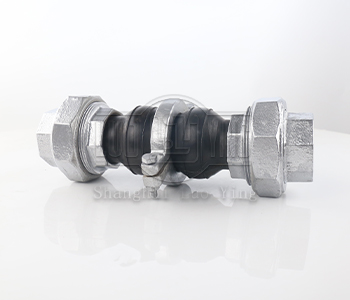The production process and use of threaded rubber flexible joints.
Jul-23-06
The production process and use of threaded rubber flexible joints.Threaded rubber flexible joints are important components used in piping systems to compensate for expansion, vibration, and misalignment. These joints are made of various materials, including rubber, steel, and bronze, and are designed to provide a flexible connection between two pipes or fittings. In this article, we will discuss the production process and use of threaded rubber flexible joints.
Production Process
The production process of threaded rubber flexible joints involves several stages, including material selection, design, manufacturing, and testing. The following are some of the steps involved in the production process of threaded rubber flexible joints:
1 . Material Selection
The first step in the production process is the selection of the materials to be used. The materials used must be able to withstand the temperature, pressure, and chemical exposure of the application.
2 . Design
Once the materials have been selected, the design of the threaded rubber flexible joint is created. The design includes the size, shape, and thread dimensions of the joint.
3 . Manufacturing
The manufacturing process involves molding the rubber around the steel or bronze components. The rubber is heated and then formed around the metal components using a mold. After molding, the threads are cut on either end of the joint.
4 . Testing
The final step in the production process is testing the threaded rubber flexible joint. The joint is tested for leaks, pressure, and temperature resistance. If the joint passes all tests, it is ready for use.

Threaded rubber flexible joints are used in piping systems for several reasons. The following are some of the uses of threaded rubber flexible joints:
1 . Compensate for Expansion
One of the primary uses of threaded rubber flexible joints is to compensate for thermal expansion in piping systems. When pipes are heated, they expand, which can cause stress and damage to the pipes and fittings. Threaded rubber flexible joints allow for movement in the system, reducing the stress on the pipes and fittings.
2 . Vibration Dampening
Threaded rubber flexible joints are also used to dampen vibration in piping systems. Vibration can cause damage to pipes and fittings and can also cause noise and discomfort. Threaded rubber flexible joints absorb vibration, reducing the risk of damage and noise.
3 . Misalignment Compensation
Threaded rubber flexible joints can also compensate for misalignment in piping systems. When pipes are not perfectly aligned, threaded rubber flexible joints can be used to connect the pipes, allowing for movement and reducing stress on the system.
4 . Chemical Resistance
Threaded rubber flexible joints are also used in applications where the piping system is exposed to aggressive chemicals. The rubber components of the joint are selected to be resistant to chemical degradation, ensuring long-lasting performance.
In conclusion, threaded rubber flexible joints are important components in piping systems that are used to compensate for expansion, vibration, and misalignment. The production process of threaded rubber flexible joints involves material selection, design, manufacturing, and testing. These joints are used in piping systems for a variety of reasons, including thermal expansion compensation, vibration dampening, misalignment compensation, and chemical resistance. Understanding the production process and use of threaded rubber flexible joints is essential for ensuring that they are properly selected and installed in piping systems.

